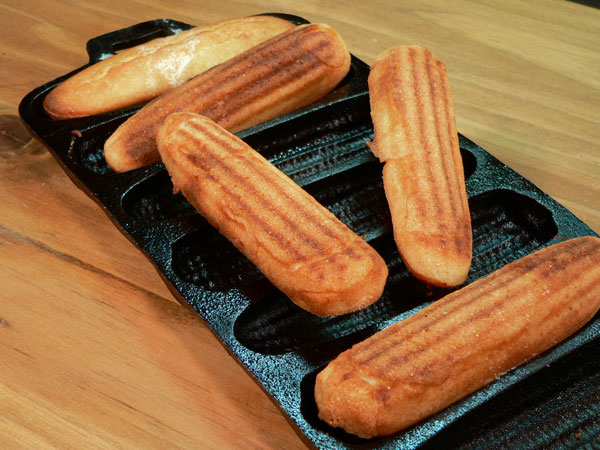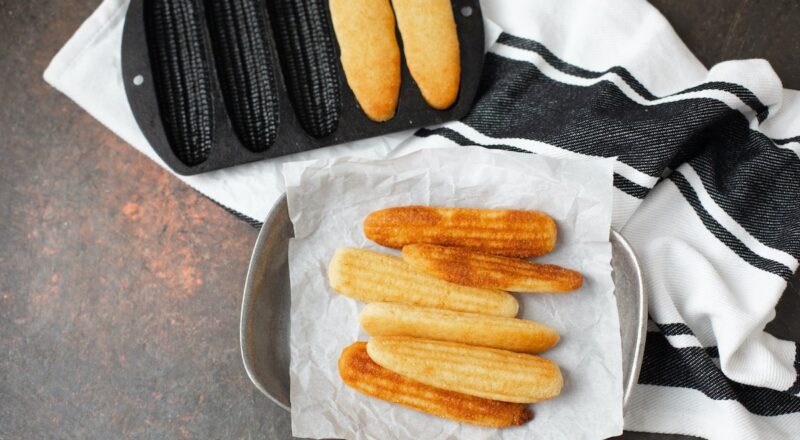If you’re passionate about baking, then you know the importance of choosing the right pan for the job. Enter the world of wedge cornbread pans, specifically designed to deliver crispy, even slices every time. These pans are revolutionizing how we approach cornbread, making it simpler to achieve that coveted perfect slice with a golden crust. With their distinct design and functionality, wedge cornbread pans are becoming a staple in many kitchens.
Not only are wedge cornbread pans popular among home bakers, but they are also prized by professional chefs aiming for consistency and quality in their dishes. Whether you are a beginner or a seasoned chef, understanding how to use and care for these pans can elevate your culinary creations.

Understanding the Wedge Cornbread Pans
What Makes Wedge Cornbread Pans Unique?
The design of wedge cornbread pans enables the creation of uniform slices, thanks to the precise divisions. This ensures each slice has an even amount of batter, maintaining consistency with little effort. The material often used, typically cast iron, ensures a crisp finish while distributing heat evenly throughout the pan.
The History of Cornbread Baking
Cornbread has a rich history, deeply rooted in American cuisine. Originating as a staple food for many indigenous tribes, it evolved over the years into various forms and flavors, from sweet to savory. The introduction of wedge cornbread pans allowed for a new dimension to this traditional dish, making it easier and more efficient to prepare.
Benefits of Using Wedge Cornbread Pans
Achieving the Perfect Slice
One of the primary benefits is the ability to achieve those crispy, even slices that are so appealing. The design of the pan not only helps with the even distribution of batter but also ensures every edge of the slice is crispy and perfect.
Simplicity in Use
These pans simplify the process of making cornbread. With their built-in divisions, even the most inexperienced baker can achieve professional results. There’s no need for excessive measuring or guesswork, making it straightforward and easy for anyone to use.
Versatility Beyond Cornbread
Beyond cornbread, these pans can be used for a variety of other dishes, such as cakes, pie slices, and brownies. Their versatility makes them a valuable addition to any kitchen’s cookware collection.
How to Use Wedge Cornbread Pans Effectively
Prepping the Pan
Before using your wedge cornbread pan, it’s essential to prepare it by applying a thin layer of oil or non-stick spray. This helps in easily releasing the slices once baked and assists in achieving that coveted crispy exterior.
Even Distribution of Batter
When pouring the batter, ensure that each section has an equal amount. This results in even cooking across all slices, which is crucial in maintaining the quality of each piece.
Baking Time and Temperature
Most cornbread recipes will require baking at 350F to 375F for about 20 to 30 minutes. However, it’s always a good idea to keep an eye on your cornbread, as different ovens might require slight adjustments to the timing. A golden-brown top is generally a good indication of doneness.
Caring for Your Wedge Cornbread Pans
Cleaning Tips
Post-use, ensure you hand wash your pan with warm water and a soft sponge. Avoid using harsh cleaning agents that could potentially damage the non-stick surface. Once cleaned, dry it thoroughly to prevent any rust in the case of cast iron pans.
Proper Storage
Store your wedge cornbread pan in a dry location. If space permits, it’s a good practice to cover your pan with a cloth or paper towel to keep dust out.

FAQ
What type of cornbread batter works best?
A batter with a balanced consistency, neither too thick nor too runny, works best to achieve crispy, even slices.
Can these pans be used for other bakes?
Yes, these pans are versatile and can be used for cakes, brownies, and other bread types.
Are there particular brands you recommend?
Brands like Lodge and Nordic Ware are popular due to their durability and reliability.
For more detailed guidance on using similar cookware, consider checking out these baking tips and comparisons between different types of pans.
This article contains affiliate links. We may earn a commission at no extra cost to you.

